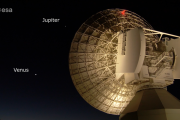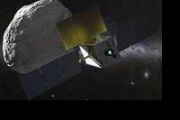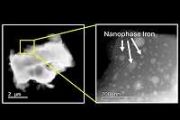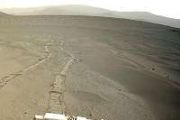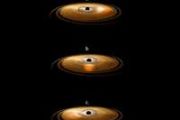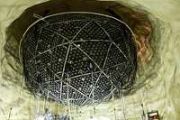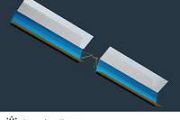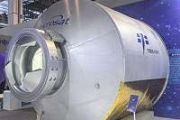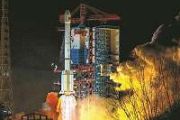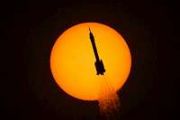
Copernical Team
First MetOp-SG satellite sealed within Ariane 6 fairing

As preparations to launch Europe’s first MetOp Second Generation, MetOp-SG-A1, satellite continue on track, the team at Europe’s Spaceport in Kourou, French Guiana, has bid a heartfelt farewell to this precious satellite as it was sealed from view within the Ariane 6 rocket’s fairing.
This all-new weather satellite, which hosts the first Copernicus Sentinel-5 instrument, is set to take to the skies on 13 August at 02:37 CEST (12 August 21:37 Kourou time).
Astronauts launch to the space station after sidelined by Boeing's troubled Starliner
This request seems a bit unusual, so we need to confirm that you're human. Please press and hold the button until it turns completely green. Thank you for your cooperation!
Press and hold the button
If you believe this is an error, please contact our support team.
185.132.36.159 : d4453379-9a3f-4e40-9ecd-b455fead
SpaceX delivers four astronauts to the International Space Station just 15 hours after launch
This request seems a bit unusual, so we need to confirm that you're human. Please press and hold the button until it turns completely green. Thank you for your cooperation!
Press and hold the button
If you believe this is an error, please contact our support team.
185.132.36.159 : 7e3d95cb-4f9b-4639-a47b-7dbb1ab2
Crypto mogul flies to space aboard latest Blue Origin flight
This request seems a bit unusual, so we need to confirm that you're human. Please press and hold the button until it turns completely green. Thank you for your cooperation!
Press and hold the button
If you believe this is an error, please contact our support team.
185.132.36.159 : b30fc2f8-9f59-467b-aa26-2f66959b
The global race to space isn't just about big countries
This request seems a bit unusual, so we need to confirm that you're human. Please press and hold the button until it turns completely green. Thank you for your cooperation!
Press and hold the button
If you believe this is an error, please contact our support team.
185.132.36.159 : 3cd383b1-71a0-4f43-b209-a8778b6f
NASA's Europa clipper radar instrument proves itself at Mars
This request seems a bit unusual, so we need to confirm that you're human. Please press and hold the button until it turns completely green. Thank you for your cooperation!
Press and hold the button
If you believe this is an error, please contact our support team.
185.132.36.159 : c6955db3-7a61-4dce-a32a-6182421e
Is Earth orbit doomed to be a billionaire's playground?
This request seems a bit unusual, so we need to confirm that you're human. Please press and hold the button until it turns completely green. Thank you for your cooperation!
Press and hold the button
If you believe this is an error, please contact our support team.
185.132.36.159 : 77d58929-3d89-4c6b-9693-6b4efc7a
China's meteoric rise into space
This request seems a bit unusual, so we need to confirm that you're human. Please press and hold the button until it turns completely green. Thank you for your cooperation!
Press and hold the button
If you believe this is an error, please contact our support team.
185.132.36.159 : b29aedea-d01d-4e79-801d-6f784e4d
Marking 13 years on Mars, NASA's Curiosity picks up new skills
This request seems a bit unusual, so we need to confirm that you're human. Please press and hold the button until it turns completely green. Thank you for your cooperation!
Press and hold the button
If you believe this is an error, please contact our support team.
185.132.36.159 : 0bc531a3-c763-42a2-830b-7dc134e5
Training robots from space
 Image:
Image:
This summer, a team of robots explored a simulated martian landscape in Germany, remotely guided by an astronaut aboard the International Space Station. This marked the fourth and final session of the Surface Avatar experiment, a collaboration between ESA and the German Aerospace Center (DLR) to develop how astronauts can control robotic teams to perform complex tasks on the Moon and Mars.
The session introduced new levels of autonomy and complexity. NASA astronaut Jonny Kim operated two robots – ESA’s four-legged Spot and DLR’s humanoid Rollin’ Justin – to retrieve scattered sample containers and deliver them to a lander. Spot













